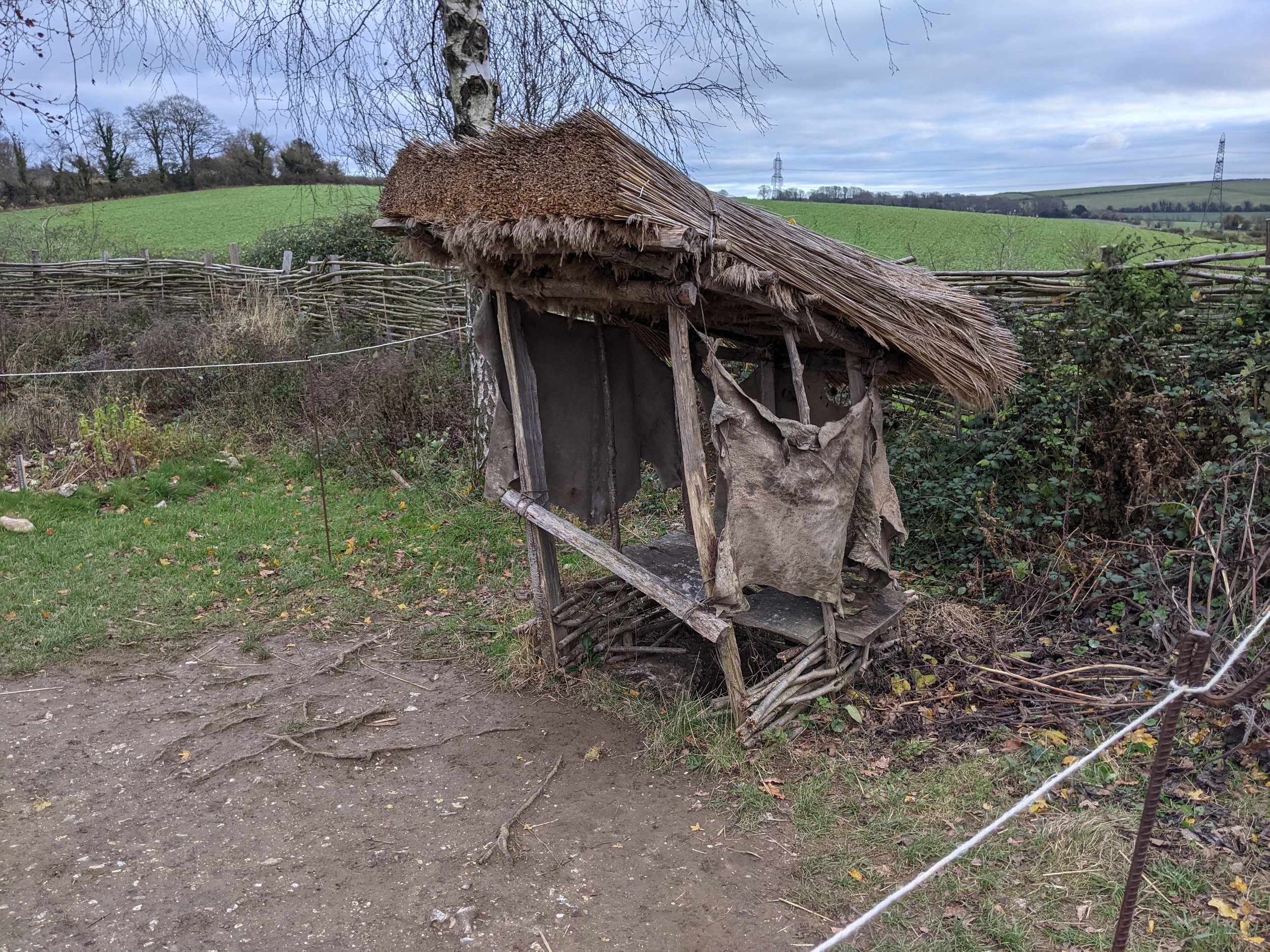The Bog Blog - building an Iron Age Toilet!
At the end of last year we were joined by Sarah and Barnaby from Bournemouth University for a work experience placement. During their time at the farm they helped with a huge number of different projects including re-doing our Iron Age toilet. Here Sarah tells us about the process behind this project. Thanks Sarah and Barnaby for all your brilliant help and we hope to see you again soon!
The original Iron Age toilet, whilst a lovely structure was in desperate need of some TLC. The string and wood holding the main structure together was starting to rot and that, along with the weight of the thatch and the roots of a nearby tree was making the whole building shift at a concerning angle.
And so, operation Fix-The-Loo started!
The state of the string and wood was significantly worse than anticipated since, upon closer inspection and some firm prodding, it had rotted to the point of disintegrating when touched. This combined with the immense weight of the thatch meant that taking the original structure down would be a difficult task. The original plan was to lift the roof off so that it could be used in the next build. But due to the weight of it: this wasn’t an option. Instead, the thatch was taken off the roof and bundled up whilst the structure was still standing.
With the thatch removed taking the frame apart was a breeze and we discovered that the original chestnut posts were fully intact so kept those to one side.
Once we had a chance to look properly at the ground, we saw that the roots of the neighbouring birch tree had encroached a little too far into our construction site. Obviously, we didn’t want to risk damaging the roots, so it was decided to move the whole structure to the right. We used the soil from levelling the ground to fill in the holes left by the old posts and the original waste pit leaving us with (roughly) level ground to work with.
From then it was simply about bashing in posts. We’d already decided to fully wattle the walls of the structure to act as protection from the elements since the other structure was rather breezy. Recently we’d acquired some lovely green willow (green meaning it’s lovely and flexible) which was used as posts for the windbreak and as the wattle. We made sure to use the original chestnut posts as the main supports since they were very good quality and nice and sturdy.
Now for the fun bit: Wattling! Unfortunately, the willow wasn’t thin enough to curve around the right-angle corners of the structure, so we simply wattled three posts together and cut the wood flush to the post, rinse and repeat. On one side the wattle was extended to include the windbreak that curves around the doorway. During this time, we also dug a new hole in the centre of the structure, that hole being the main “functional” part of our Iron Age Toilet.
Once the walls were fully wattled, we considered our options for the roof: we could make a frame and rethatch the roof however the weight of the thatch would cause the willow to bend and risk collapsing, not to mention it was the middle of December, so the weather was starting to get cold and thatching in the cold and wet is less than ideal. So, we thought we’d test out a leather roof. We made some arches by attaching two pieces of willow to the front post then tying them in the middle. It seemed pretty sturdy, so we made two more at different heights giving the roof a slope. These were all connected with some sticks that were woven tightly into the arches creating a sturdy base for the final step.
Finally, some leather skins were tied in place. For the time being they act as a fantastic roof that’s waterproof, windproof, and interesting to look at. However, the skins will start to rot so the plan, when the weather gets dryer, is to add pitch (a type of resin that can be made from tree sap) to create a solid waterproof layer that will protect the skins. That’s a job for the spring so for the time being our toilet is complete!
Be sure to come visit our toilet in our Iron Age enclosure and ask yourself: If you REALLY had to go, would you use it?
Sarah with Bronze Age re-enactor Will at the opening of our Bronze Age Roundhouse in October 2021



